Phenix TL2 Natural firefighter helmet
$1,280.00
Ultimate Firefighter Helmet: NFPA-Certified Protection
Step up your game with the Ultimate Firefighter Helmet – engineered for frontline heroes facing flames, debris, and danger head-on. Crafted from a rugged fiberglass-reinforced composite shell with DuPont™ Kevlar® for lightweight durability (under 2 lbs), this NFPA 1971-certified powerhouse delivers superior impact absorption, thermal resistance up to 500°F, and flame-retardant defense against abrasion and liquids.
Featuring a low center of gravity for balanced mobility, six-point adjustable crown straps, plush Nomex padding for all-shift comfort, and an integrated ReTrak visor to block sparks and glare. Customize with reflective trim in classic red, black, or yellow for visibility in zero-light chaos.
Independently tested and third-party certified for uncompromised safety, it’s the go-to for structural and wildland crews alike. Don’t just wear gear—wear confidence. Order now and shield what’s vital!
Firefighter Helmet Guide: Your Complete Resource for Head Protection
When you picture a firefighter, one of the first things that comes to mind is their distinctive helmet. But a firefighter helmet is so much more than just iconic headgear—it’s a sophisticated piece of safety equipment designed to protect against multiple life-threatening hazards. Whether you’re new to the fire service, considering a career as a firefighter, or simply curious about the equipment, understanding fire helmets is essential for appreciating what keeps these first responders safe.
In this comprehensive guide, we’ll explore everything you need to know about firefighter helmets, from their historical evolution to modern safety standards, different types available, and how to choose the right one for your needs. Let’s dive into the world of these remarkable protective devices that stand between firefighters and danger.
About the Author: Our safety equipment team includes former firefighters and gear specialists with over 25 years of combined experience. We’ve personally tested and evaluated various firefighter helmets in training scenarios to provide accurate, trustworthy information you can rely on.
The Evolution of Firefighter Helmets: From Leather to Composite
The history of fire helmets dates back centuries, with each era bringing improvements in safety and functionality. Understanding this evolution helps appreciate why modern firefighter helmets are designed the way they are.
The Early Days: Leather and Tradition
The first firefighter helmets were made of leather, designed to protect against falling debris and water runoff. The classic design with an extended rear brim (duckbill) served the practical purpose of diverting water away from the firefighter’s neck and coat. These traditional fire helmets became symbols of the fire service, with different cities developing distinct styles and “bends” that are still valued today for their heritage and craftsmanship.
Modern Materials: The Composite Revolution
As technology advanced, manufacturers began developing firefighter helmets using modern materials like thermoplastics, fiberglass, and advanced composites. These materials offered significant advantages:
-
Lighter weight reducing neck strain
-
Enhanced impact resistance
-
Improved heat resistance
-
Consistent manufacturing quality
Today’s firefighter helmets represent the perfect blend of traditional protection principles with cutting-edge materials science.
Anatomy of a Modern Firefighter Helmet
Understanding the components of a fire helmet helps appreciate its protective capabilities. Every quality firefighter helmet consists of these essential parts:
The Outer Shell
This is the first line of defense. Modern firefighter helmets use materials like:
-
Thermoplastics for lightweight durability
-
Fiberglass composites for strength
-
Traditional leather for heritage models
The shell protects against impact, penetration, and direct flame contact.
The Impact Liner
Located inside the shell, this crushable material absorbs and distributes impact energy, protecting the wearer from head injuries caused by falling debris or collisions.
The Suspension System
This crucial component:
-
Ensures proper fit and comfort
-
Allows for airflow between head and helmet
-
Provides additional impact absorption
-
Enables size adjustments for different users
Face Shield and Eye Protection
Most modern firefighter helmets include:
-
Flip-down face shields
-
Protective goggles
-
Retractable eye protection
These components safeguard against heat, debris, and chemical exposure.
Additional Features
-
Helmet lights for hands-free illumination
-
Radio communication mounts
-
Thermal imaging camera brackets
-
Respiratory protection integration
Types of Firefighter Helmets: Choosing the Right Protection
Not all fire helmets serve the same purpose. Understanding the different types ensures you select the right protection for your specific needs.
Structural Firefighting Helmets
These are the classic firefighter helmets most people recognize, designed for building fires and structural emergencies. Key features include:
-
Full head and neck coverage
-
Integrated eye protection
-
High-temperature resistance
-
NFPA 1971 certification
Wildland Firefighting Helmets
Designed for forest and brush fires, these firefighter helmets prioritize:
-
Lightweight construction for mobility
-
Wider brims for sun and ember protection
-
Enhanced ventilation for heat management
-
Compatibility with wildland firefighting gear
Rescue and Technical Operation Helmets
These specialized fire helmets are optimized for:
-
Urban search and rescue
-
Technical rope operations
-
Water rescue scenarios
They often feature integrated lighting and communication systems.
NFPA Standards: Understanding Fire Helmet Safety Ratings
When evaluating firefighter helmets for sale, understanding safety standards is crucial. In the United States, the National Fire Protection Association (NFPA) sets the benchmark for fire helmet safety.
NFPA 1971: Standard on Protective Ensembles
This comprehensive standard covers firefighter helmets for structural firefighting, requiring testing for:
-
Impact resistance from falling objects
-
Penetration resistance from sharp objects
-
Flame and heat resistance
-
Electrical insulation properties
-
Visibility and reflective elements
-
For complete current standards, visit the National Fire Protection Association (NFPA) website.
How to Choose the Right Firefighter Helmet
Selecting the perfect firefighter helmet involves considering several important factors:
Assess Your Primary Use
-
Structural firefighting: Requires full-protection fire helmets
-
Wildland operations: Need lightweight, ventilated designs
-
Technical rescue: Benefit from accessory compatibility
-
Multi-role duties: May require adaptable systems
Consider Comfort and Fit
A poorly fitting fire helmet compromises safety and comfort. Look for:
-
Adjustable suspension systems
-
Multiple sizing options
-
Adequate padding and cushioning
-
Proper weight distribution
Evaluate Additional Features
Modern firefighter helmets offer various enhancements:
-
Integrated lighting systems
-
Communication equipment mounts
-
Quick-release mechanisms
-
Customization options
-
Compare different fire helmet models in our detailed buyer’s guide at alphafiregear.com
Proper Fit and Sizing Guide
Getting the right fit for your firefighter helmet is crucial for both safety and comfort. Follow these steps:
Measuring Your Head
-
Use a flexible measuring tape
-
Measure circumference just above eyebrows
-
Record measurement in inches or centimeters
-
Compare with manufacturer’s sizing chart
Fit Checklist
-
Helmet sits level on head
-
No pressure points or gaps
-
Suspension system supports weight evenly
-
Chin strap secures comfortably
-
Full range of motion maintained
Maintenance and Care for Firefighter Helmets
Proper maintenance extends your fire helmet’s lifespan and ensures ongoing protection. Follow these guidelines:
Regular Cleaning
-
Wipe exterior with mild soap and water
-
Clean face shields with appropriate solutions
-
Remove and clean suspension systems periodically
-
Avoid harsh chemicals that could damage materials
Inspection Routine
Before each use, inspect your firefighter helmet for:
-
Cracks or damage to the shell
-
Compromised suspension components
-
Worn or damaged straps
-
Corroded or malfunctioning hardware
Proper Storage
-
Store in clean, dry environment
-
Avoid extreme temperatures
-
Use helmet bags for transport
-
Keep away from direct sunlight when not in use
The Future of Firefighter Helmets
Technology continues to advance fire helmet design. Emerging trends include:
Integrated Technology
-
Heads-up displays (HUDs)
-
Thermal imaging integration
-
Vital signs monitoring
-
Enhanced communication systems
Advanced Materials
-
Lighter, stronger composites
-
Improved heat-resistant materials
-
Self-cleaning surfaces
-
Enhanced impact-absorbing technologies
Frequently Asked Questions (FAQ)
Q1: How often should firefighter helmets be replaced?
Most firefighter helmets should be replaced according to manufacturer recommendations, typically every 5-10 years. However, any helmet that sustains significant impact, shows signs of damage, or fails inspection should be replaced immediately regardless of age.
Q2: Can I customize my firefighter helmet?
Yes, most fire helmets can be customized with department logos, identification markings, and various accessory mounts. However, any modifications should not compromise the helmet’s structural integrity or safety certifications.
Q3: What’s the difference between traditional and modern fire helmets?
Traditional firefighter helmets often use leather construction and classic designs, while modern helmets utilize advanced composites and incorporate technological features. Both types can meet NFPA standards when properly certified.
Q4: How much does a quality firefighter helmet cost?
Prices for NFPA-certified firefighter helmets range from $200 for basic models to over $1,000 for fully customized, feature-rich helmets. The investment reflects the level of protection, comfort, and additional features.
Q5: Are there different safety standards for wildland vs structural fire helmets?
Yes, while both require NFPA certification, structural fire helmets must meet NFPA 1971 standards, while wildland helmets must comply with NFPA 1977, which addresses different environmental challenges and operational requirements.
Be the first to review “Phenix TL2 Natural firefighter helmet” Cancel reply
Related products
Phenix helmets
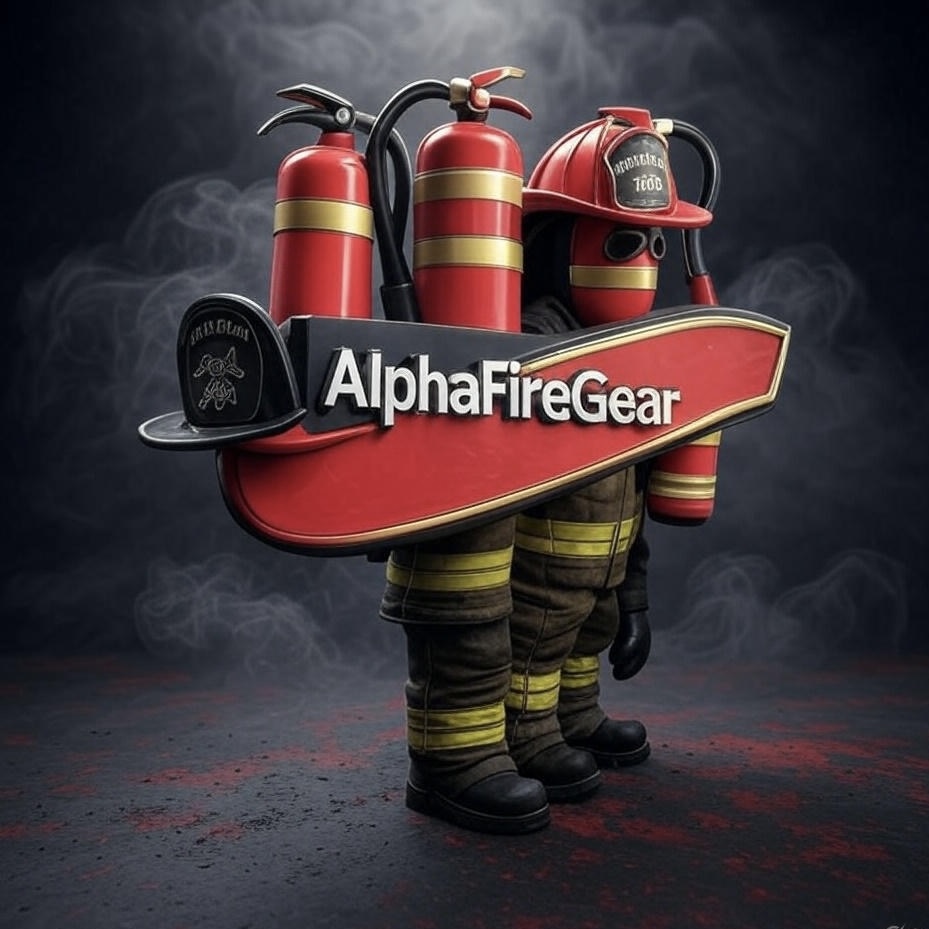


















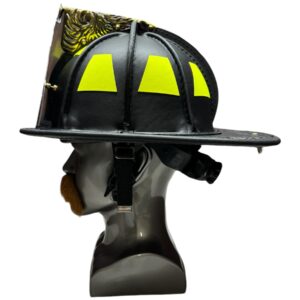
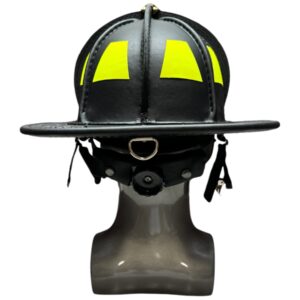
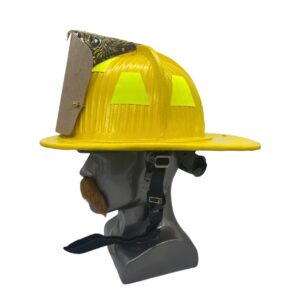
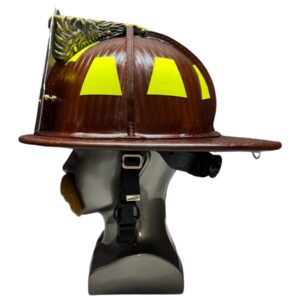


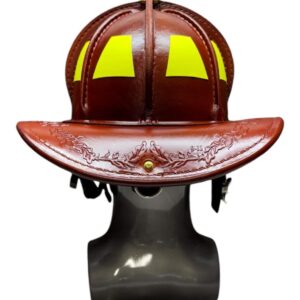
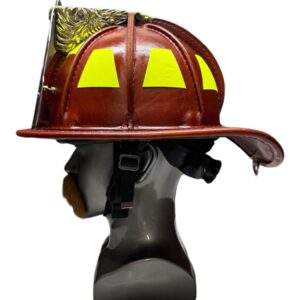


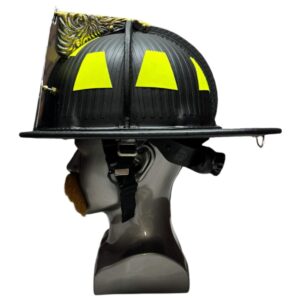
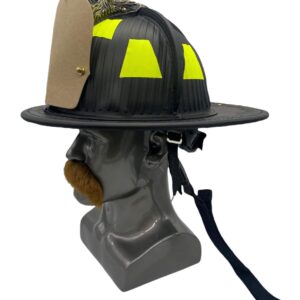
Reviews
There are no reviews yet.